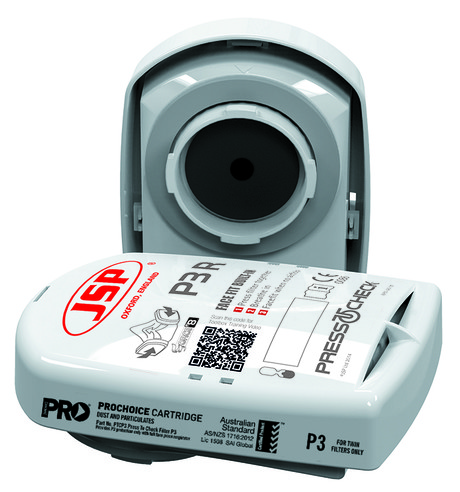How to ensure your respiratory mask fits correctly

When wearing respiratory protective equipment (RPE), it is necessary to prevent exposure to contaminants by ensuring a tight seal is made around the face.
This can be made difficult by elements such as facial structure, hair, jewellery and make-up.
In addition, prescription glasses worn in conjunction with RPE should be tested to ensure that the effectiveness of the equipment is not compromised.
Comfort is also important as it will encourage wear. A good respirator should provide a tight seal without being uncomfortable.
The Australian Standard AS/NZS 1715:2009 ‘Selection, use and maintenance of respiratory protective equipment’ cautions against overtightening the respirator to achieve a tight seal because “the wearer may be unable to tolerate using the RPE for any length of time”.
The Standard describes two types of respirator fit tests — qualitative and quantitative — that can be used to determine an adequate match between the facepiece of the RPE and face of the wearer.
It states that a qualitative or quantitative fit test should be performed before a respirator is used and then “at least annually or whenever there is a change in the wearer’s facial characteristics or other features which may affect the facial seal of the respirator”, such as weight changes, loss of teeth or when biological tests indicate exposure to a contaminant.
Furthermore, before each use, the respiratory protective equipment should be worn prior to the worker entering a contaminated area and a simple positive or negative pressure check performed by the user to check the fit.
Commercial qualitative testing kits are available; however, while qualitative tests are fairly easily performed, they are subjective to the user and so not necessarily reliable.
Quantitative test methods remove this subjectivity by using equipment to measure the efficiency of a respirator in preventing materials in the atmosphere from entering a user’s breathing zone.
Qualitative and quantitative respirator testing is carried out with the help of or by a specialist, who will determine a suitable approach tailored to user requirements.
However, neither should serve as a substitute for pre-use positive and negative fit testing, which are essential and will function as a simple backup seal assessment.
ProChoice Safety Gear’s silicone half-mask respirators with PressToCheck filters have been engineered to enable self-assessment of the silicone mask’s seal for more effective protection.
PressToCheck is a personal positive or negative fit check system that can be easily performed anywhere. However, it should not replace a qualitative or quantitative fit test in accordance with Australian Standard AS/NZS1715.
Engaging the workforce with safety wearables: key considerations
The success of safety wearables lies not just in their objective data, but in how they engage...
What are the key safety tech trends for 2024?
Promoting and protecting worker safety is a critical objective for Australian businesses.
Heat stress devices trialled on workers
A new approach designed to protect outdoor workers from the dangerous effects of heat is being...










